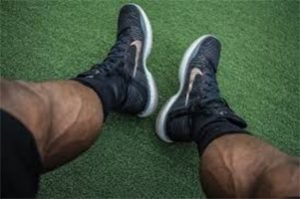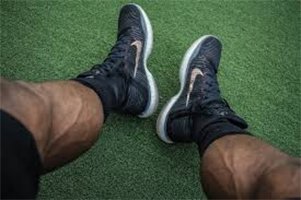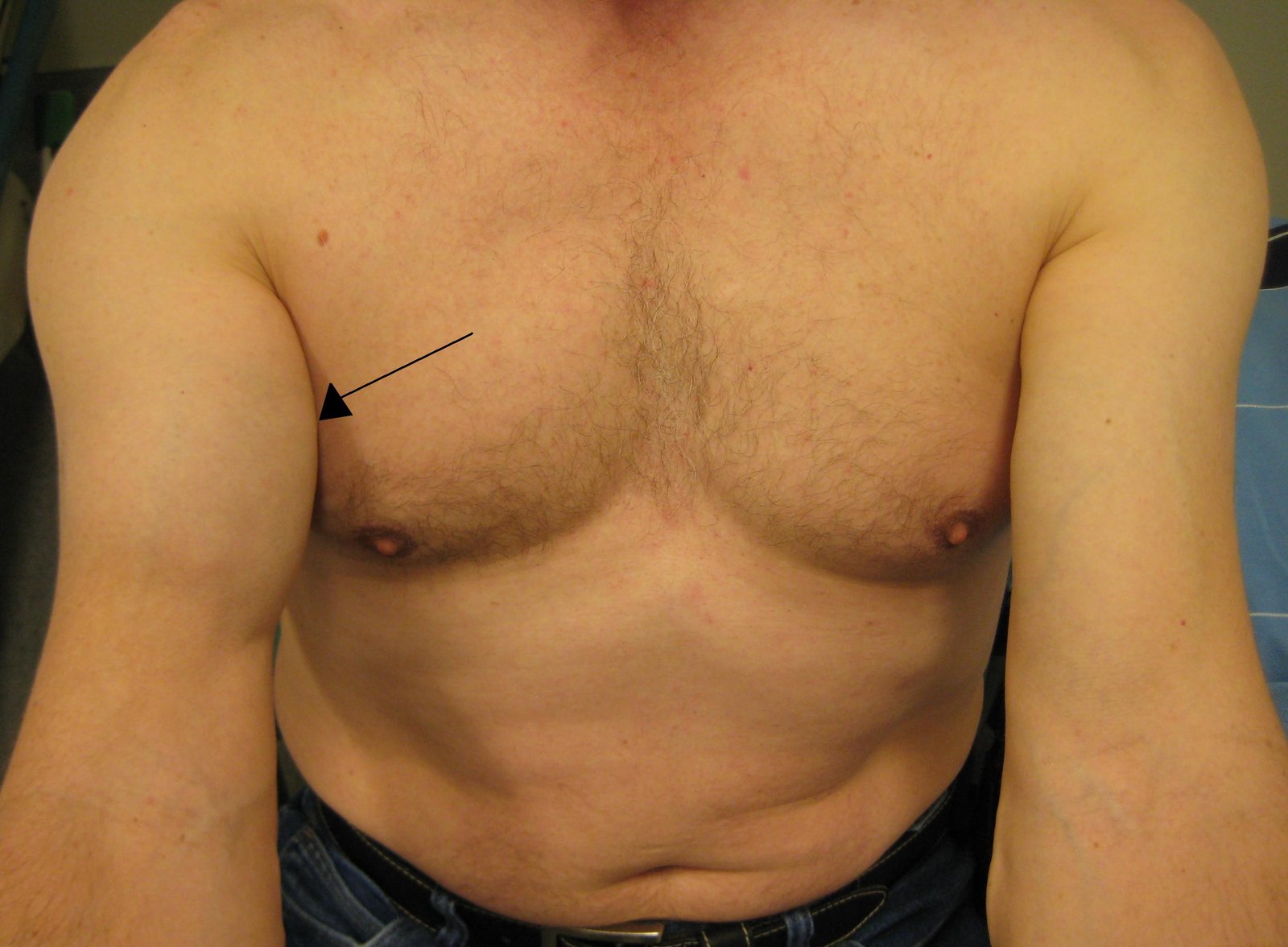Physical Therapist’s Guide to Calf Strain A calf strain is an injury to the muscles in the calf area (the back of the lower leg below the knee). The calf muscle is actually composed of up to 9 separate muscles, any of which can be injured individually or together. Calf strains can occur during hi-speed
Physical Therapist’s Guide to Calf Strain

A calf strain is an injury to the muscles in the calf area (the back of the lower leg below the knee). The calf muscle is actually composed of up to 9 separate muscles, any of which can be injured individually or together. Calf strains can occur during hi-speed motions like running and jumping, or from any type of forceful or uncoordinated movement. Calf strains are a well-known problem for runners, soccer and basketball players, gymnasts, and dancers. Although global statistics are sparse, one 8-year study of professional soccer players revealed a 13% calf-strain injury rate. Advancing age can increase the vulnerability of the calf to injury and strain with less forceful movements. Physical therapists treat individuals with calf strains by reducing pain, restoring muscle strength and flexibility, and increasing their recovery speed.
What is a Calf Strain?
The “calf muscle” consists of 9 different muscles. The gastrocnemius, soleus, and plantaris muscles attach onto the heel bone, and work together to produce the downward motion of the foot. The other 6 muscles cause knee, toe, and foot movements in different directions; these muscles are the popliteus, flexor digitorum longus, flexor hallucis longus, tibialis posterior, and the fibularis (or peroneal) longus and brevis. They extend from the lower leg bones around the sides of the ankle and attach to various parts of the foot and toes. Injuries to these 6 muscles are sometimes wrongly attributed to the first 3 muscles mentioned here, as the pain is felt in similar areas of the calf.
A calf strain is caused by overstretching or tearing any of the 9 muscles of the calf. Calf strains can occur suddenly or slowly over time, and activities, such as walking, climbing stairs, or running can be painful, difficult, or impossible.
A muscle strain is graded according to the amount of muscle damage that has occurred:
- Grade 1. A mild or partial stretch or tearing of a few muscle fibers. The muscle is tender and painful, but maintains its normal strength. Use of the leg is not impaired, and walking is normal.
- Grade 2. A moderate stretch or tearing of a greater percentage of the muscle fibers. A snapping or pulling sensation may occur at the time of the injury and after the injury. There is more tenderness and pain, noticeable loss of strength, and sometimes bruising. Use of the leg is visibly impaired, and limping when walking is common.
- Grade 3. A severe tear of the muscle fibers, sometimes a complete muscle tear. A “popping” sound may be heard or felt when the injury occurs. Bruising is apparent, and sometimes a “dent” in the muscle where it is torn is visible beneath the skin. Use of the leg is extremely difficult, and putting weight on the leg is very painful.
When muscles are strained or torn, muscle fibers and other cells are disrupted and bleeding occurs, which causes bruising. Within a few hours of the injury, swelling can occur, causing the injured area to expand and feel tight and stiff.
After a severe calf strain, bruising may also be seen around the ankle or foot, as gravity pulls the escaped blood toward the lower part of the leg.
How Does it Feel?
If you strain your calf muscles, you may feel:
- Sharp pain or weakness in the back of the lower leg. The pain can quickly resolve, or can persist.
- A throbbing pain at rest with sharp stabs of pain occurring when you try to stand or walk.
- A feeling of tightness or weakness in the calf area.
- Spasms (a gripping or severe tightening feeling in the calf muscle).
- Sharp pain in the back of the lower leg, when trying to stretch or move the ankle or knee.
- A “pop” or hear a “pop” sound at the time of injury (with a Grade 3 calf strain).
Signs and Symptoms
With a calf strain, you may experience:
- A snap or pull felt or heard at the time of injury (with a Grade 1 and 2 calf strain). A “pop” may be felt or heard at the time of injury of a Grade 3 calf strain.
- Pain and weakness in the calf area.
- Swelling in the area.
- Tightness in the area.
- Bruising.
- Weakness in the calf when trying to walk, climb stairs, or stand.
- Limping when walking.
- Difficulty performing daily activities that require standing and walking.
- An inability to run or jump on the affected leg.
How Is It Diagnosed?
If you see your physical therapist first, your physical therapist will conduct a thorough evaluation that includes taking your health history. Your physical therapist will ask you:
- What were you doing when you first felt pain?
- Where did you feel the pain?
- Did you hear or feel a “pop” when it occurred?
- Did you receive a direct hit to your calf area?
- Did you see severe swelling in the first 2 to 3 hours following the injury?
- Do you feel pain when moving your ankle or knee, standing, or walking?
Your physical therapist will perform special tests to help determine whether you have a calf strain, such as:
- Watch how you walk, and see if you can bear weight on the injured leg.
- Test the different calf muscles for weakness.
- Look for swelling or bruising.
- Gently feel parts of the muscle to determine the specific location of the injury (palpation).
Your physical therapist may use additional tests to assess possible damage to specific muscles of the lower leg.
In certain cases, your physical therapist may collaborate with an orthopedist or other health care provider. The orthopedist may order further tests, such as an x-ray or magnetic resonance imaging (MRI), to confirm the diagnosis and to rule out other potential damage. These tests, however, are not commonly required for a calf strain.
How Can a Physical Therapist Help?
Your physical therapist will design a specific treatment program to speed your recovery, including exercises and treatments that you can do at home to help you return to your normal lifestyle and activities.
The First 24 to 48 Hours
Your physical therapist may advise you to:
- Rest the area by avoiding walking or any activity that causes pain. Crutches or a brace may be recommended to reduce further strain on the muscles when walking.
- Apply ice packs to the area for 15 to 20 minutes every 2 hours.
- Compress the area with an elastic bandage wrap.
- Insert heel lift pads into both of your shoes.
- Consult with another health care provider for further services, such as medication or diagnostic tests.
Treatment Plan
Your physical therapist will provide treatments to:
Reduce Pain. Your physical therapist can use different types of treatments and technologies to control and reduce your pain, including ice, heat, ultrasound, electricity, taping, exercises, heel lifts, and hands-on therapy, such as massage.
Improve Motion. Your physical therapist will choose specific activities and treatments to help restore normal movement in the knee and ankle. These might begin with “passive” motions that the physical therapist performs for you to gently move your knee and ankle, and progress to active exercises and stretches that you perform yourself to increase muscle flexibility.
Improve Strength. Certain exercises will benefit healing at each stage of recovery; your physical therapist will choose the appropriate exercises, and teach you how to safely and steadily restore your strength and agility. These may include using cuff weights, stretchy bands, weight-lifting equipment, and cardio exercise equipment, such as treadmills or stationary bicycles.
Speed Recovery Time. Your physical therapist is trained and experienced in choosing the right treatments and exercises to help you safely heal, return to your normal lifestyle, and reach your goals faster than you are likely to do on your own.
Return to Activities. Your physical therapist will collaborate with you to decide on your recovery goals, including your return to work or sport, and will design your treatment program to help you reach those goals in the safest, fastest, and most effective way possible. Your physical therapist will apply hands-on therapy, such as massage, and teach you exercises, work retraining activities, and sport-specific techniques and drills to help you achieve your goals.
Prevent Future Reinjury. Your physical therapist can recommend a home-exercise program to strengthen and stretch the muscles around your ankle and knee to help prevent future reinjury of your calf. These may include strength and flexibility exercises for the calf, toe, knee, and ankle muscles.
If Surgery Is Necessary
Surgery is rarely necessary in the case of calf strain, but if a calf muscle fully tears and requires surgical repair, your physical therapist will help you minimize pain, restore motion and strength, and return to normal activities in the safest and speediest manner possible after surgery.
Can this Injury or Condition be Prevented?
Calf strains can be prevented by:
- Increasing the intensity of any activity or sport gradually, not suddenly. Avoid pushing yourself too hard, too fast, too soon.
- Always warming up before starting a sport or heavy physical activity.
- Following a consistent strength and flexibility/stretching exercise program to maintain good physical conditioning, even in a sport’s off-season.
- Wearing shoes that are in good condition and fit well.
Real Life Experiences
Donna is a 35-year-old weekend soccer player. She tries to perform weight-training exercises 3 times during the week to keep her muscles strong. On the weekends, she plays in soccer tournaments with other players her age. In 1 game on a Saturday afternoon, she was running to intercept an opposing player who had the ball. In the middle of her sprint, Donna felt a sharp pull and snap in the back of her lower leg, in the upper part of her calf muscle. She had to stop running immediately, and limped off the field, barely able to use her injured leg to walk. She felt immediate pain in the injured calf, which did not get better that night. When she awoke the next morning, her calf felt swollen, tight, and too painful to walk. She called her physical therapist.
Donna’s physical therapist examined her calf, visually and by touch. He could see and feel the swelling in the area where Donna said she felt the snap during the game. He tested the ankle- and knee-joint motions, and found limitations in ankle motion. He also tested the muscle strength in each of her calf muscles, and concluded that the soleus and flexor hallucis longus muscles were overstretched and mildly torn. He diagnosed a Grade 2 calf strain.
Donna’s physical therapist started immediate treatment to limit and reverse the swelling and pain in her calf area, and restore her ankle motion. He performed hands-on treatment called edema massage (a slow 1-direction massage) and applied electrical stimulation to help reduce the swelling and pain. He taught Donna some simple movements to perform each hour to help restore her ankle movement and calf flexibility. He placed half-inch heel lifts in both of her shoes to keep her injured calf from having to stretch too much while walking.
Before Donna left the clinic, her physical therapist applied elastic tape to the calf to help reduce the swelling. He told Donna she could leave it on until her next physical therapy visit. He gave Donna crutches, and taught her how to use them to take some weight off her injured leg and maintain her balance. However, he explained to her that she still needed to try to put as much weight as she could bear on the injured side, and to use the knee, ankle, and foot as normally as possible, so the muscles and joints would not get stiff.
Donna performed her home exercises as instructed, and when she returned to physical therapy 2 days later, she had gained more movement in her ankle. Her physical therapist helped her start a program of gradual strengthening exercises that used light resistance with exercise bands, which did not increase her pain.
Donna continued attending physical therapy for 3 weeks, increasing her strengthening program until she was able to start jogging slowly. At that point, her physical therapist allowed her to start performing slow and careful sports drills in the clinic to begin regaining her soccer technique. Donna and her physical therapist worked on soccer-specific activities for another week, until she could run moderately fast, at which point she joined her weekend team for practice drills, but not for a game.
Five weeks after her injury, Donna was able to compete in her first game, playing for a full half. Donna heeded her physical therapist’s advice about consistently warming up her leg and calf muscles before practices or games. The next week, she was able to play a full game.
As the tournament schedule drew to a close, Donna was able to celebrate her team’s championship season knowing she was safely back at the top of her form.
What Kind of Physical Therapist Do I Need?
All physical therapists are prepared through education and experience to treat calf strains. However, you may want to consider:
- A physical therapist who is experienced in treating people with calf strains.
- A physical therapist whose practice focus is in orthopedics or sports rehabilitation.
- A physical therapist who is a board-certified clinical specialist, or who completed a residency or fellowship in sports physical therapy. This therapist has advanced knowledge, experience, and skills that may apply to your condition.
You can find physical therapists who have these and other credentials by using Find a PT, the online tool built by the American Physical Therapy Association to help you search for physical therapists with specific clinical expertise in your geographic area.
General tips when you’re looking for a physical therapist (or any other health care provider):
- Get recommendations from family and friends or from other health care providers.
- When you contact a physical therapy clinic for an appointment, ask about the physical therapists’ experience in helping people who have calf strains.
- During your first visit with the physical therapist, be prepared to describe your symptoms in as much detail as possible, and describe what makes your symptoms worse.
Further Reading
The American Physical Therapy Association (APTA) believes that consumers should have access to information that could help them make health care decisions and also prepare them for their visit with their health care provider.
The following articles provide some of the best scientific evidence related to physical therapy treatment of calf strain. The articles report recent research and give an overview of the standards of practice both in the United States and internationally. The article titles are linked either to a PubMed* abstract of the article or to free full text, so that you can read it or print out a copy to bring with you to your health care provider.
Ekstrand J, Hägglund M, Waldén M. Epidemiology of muscle injuries in professional football (soccer). Am J Sports Med. 2011;39(6):1226-1232. Article Summary in PubMed.
Bryan Dixon J. Gastrocnemius vs. soleus strain: how to differentiate and deal with calf muscle injuries. Curr Rev Musculoskelet Med. 2009;2:74–77. Free Article. Article Summary in PubMed.
Bleakley CM. Current concepts in the use of PRICE for soft tissue injury management. Physiotherapy Ireland. 2009;30:19–20. Article Summary not available.
Campbell JT. Posterior calf injury. Foot Ankle Clin. 2009;14(4):761–771. Article Summary in PubMed.
Armfield DR, Kim DH, Towers JD, Bradley JP, Robertson DD. Sports-related muscle injury in the lower extremity. Clin Sports Med. 2006;25(4):803–842. Article Summary in PubMed.
Best T. Soft-tissue injuries and muscle tears. Clin Sports Med. 1997;16(3):419–434. Article Summary in PubMed.
* PubMed is a free online resource developed by the National Center for Biotechnology Information (NCBI). PubMed contains millions of citations to biomedical literature, including citations in the National Library of Medicine’s MEDLINE database.
Authored by Andrea Avruskin, PT, DPT. Reviewed by the MoveForwardPT.com editorial board.








Leave a Comment
You must be logged in to post a comment.